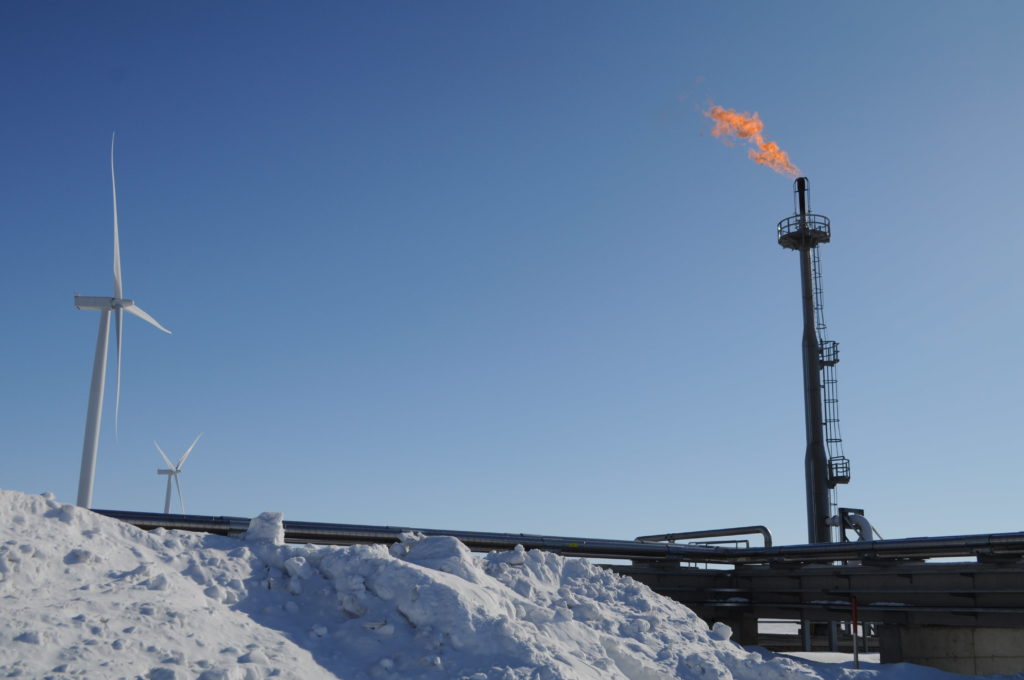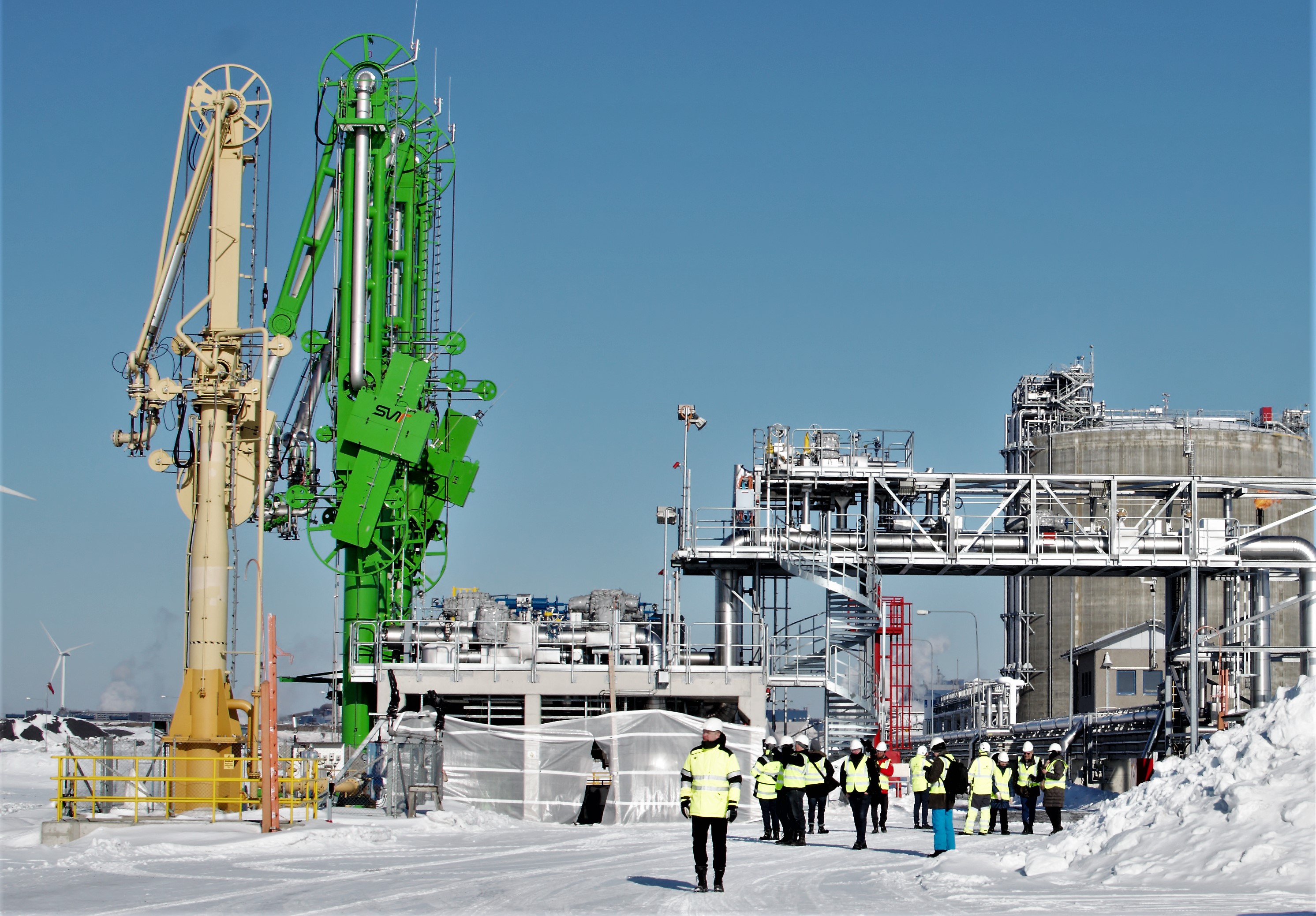OUTOKUMPU is a Finnish steel maker that, like many European heavy industries, are duty bound to abide by a number of growing environmental rules and structures – such as the emission trading scheme.
The company’s push to cut energy costs and emissions is having a significant impact on the shipping industry that services its needs.
With its furnaces and industrial processes steel making, particularly stainless steel, Outokumpu’s main product, has huge energy demands, and with energy closely linked to operational costs and emission challenges, Outokumpu decided recently to switch one of its main energy sources for its Finnish operations away from propane to natural gas, or in particular liquid natural gas.
One of Outokumpu’s stainless steel processing plants sits on the most northerly shore of the Gulf of Bothnia in the Baltic Sea. From the Outokumpu harbour near the town of Tornio, one can walk over the frozen waters to Sweden. The ice is so thick it is cut into blocks to make the famous Ice hotel nearby.
When Fathom.World visited the site, to see a newly built LNG terminal, the temperature had ´risen slightly to minus ten centigrade and the skies were clear. The weather is not always so accommodating.
So, it takes a particular kind of determination to work on a construction site in harsh temperatures that reach 30 degrees or more below freezing, with the sun sinking below the horizon in November and not being seen again for two months. Over the last three years Wärtsilä’s engineers have been overseeing the construction of the terminal, the commissioning and will be on site operational as part of a long-term contract when supplies start in earnest this quarter.
The terminal is owned by Manga LNG, which is a joint venture between Outokumpu, which has a 45% stake, the gas supplier Skangas, Swedish steelmaker SSAB (both with 25%), and EPV, a Finnish heat and power company, with a 5% stake.
Over the first few months of 2018 the final commissioning touches are being put in place by Wärtsilä, who invited Fathom to visit the site, and soon the terminal will be taking regular cargoes from Coral Energy and the ice-classed Coral EnergICE, both owned by shipowner Anthony Veder.
 The LNG carriers that will be shuttling LNG in on what Manga hopes will be a regular basis. Coral Energice can carry a cargo of 18.000 m 3. According to Skangas regional sales director Tommy Mattila the cargoes will come from Skangas facilities in Norway and mainland Europe.
The LNG carriers that will be shuttling LNG in on what Manga hopes will be a regular basis. Coral Energice can carry a cargo of 18.000 m 3. According to Skangas regional sales director Tommy Mattila the cargoes will come from Skangas facilities in Norway and mainland Europe.
There’s a double benefit, the terminal jetty has receiving arms to take the LNG, but it also has a loading arm for any LNG powered vessels that need fuelling in the area, and there is one in particular the company will have in mind, the dual fuelled icebreaker, Polaris, operated by Arctia the Finnish state-owned icebreaker outfit.
The steelmaker needs icebreakers to help Coral Energie come in with its fuel through the thick winter ice, but also the cargo vessels that ship the steel out of Finland, and the occasional cargo of scrap steel in that it then recycles.
There’s also some other gas-powered vessels on order that will be operational in the area soon, so Manga is hoping to find new customers for its LNG, beyond Outokumpu, its major shareholder, and a few other industrial plants in the region such as pulp and paper mills in North Finland.
Mattila points out that had Oulkumpu not wanted to switch to LNG fuel then the north of Bothnia would not have an LNG bunkering location available. This is the way LNG as a marine fuel is spreading, by coupling its availability to industrial demands ashore, as steel mills, pulp and paper mills, and power generators look to transition to cleaner and potentially cheaper alternatives.
Outokumpu head of operations Martti Sassi said the company has spent €25m modifying its production lines to use LNG, enabling cost benefits in is melting and furnace.
But the influence that Outukump has will not end with the production of steel. He says the company has an eye on the company’s supply chain. The Outomumpu Tornio sire has a regular run of vessels taking the raw material to the company’s finishing plants in the Netherlands, a country that als has a growing LNG bunkering infrastructure.
And here the price difference between a low sulphur distillate fuel and the LNG will be a significant factor in the decision.
Therefore, it may only be a matter of time before the company could be putting pressure on its own supply chain, preferring LNG powered ships, which can of course be refueled using Manga LNG.
www.fathom.world
































